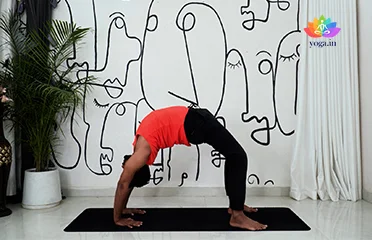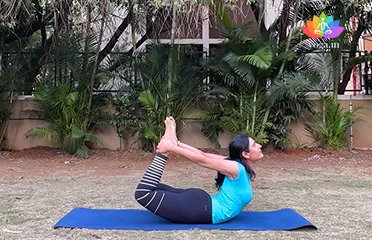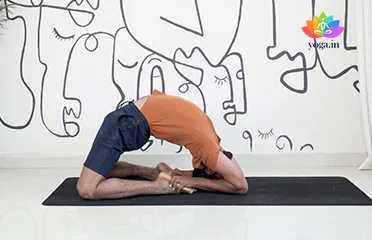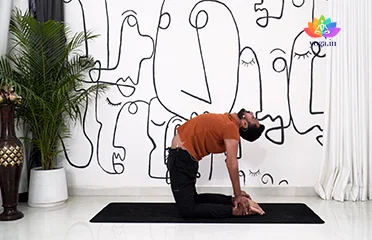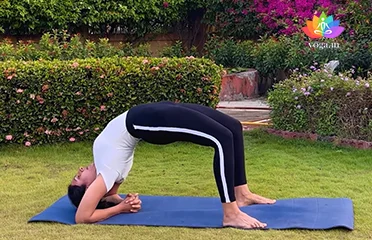Chakrasana (Wheel Pose)
चक्रासनI / Wheel Pose
The Sanskrit name is derived from Chakra (चक्रा) means wheel and asana [�K]
Dhanurasana (Bow Pose)
धनुरासन / Bow Pose
The Sanskrit name is derived from Dhanur (धनुर) means bow and Asana [�K]
Kapotasana (Pigeon Pose)
कपोटासन / Pigeon Pose
The Sanskrit name is derived from Kapota (कपोटा) meaning pigeon or [�K]
Ushtrasana (Camel Pose)
उष्ट्रासनI / Camel Pose
The Sanskrit name is derived from Ushtra (उष्ट्रासनI) meaning [�K]
Viparita Dandasana (Inverted Staff Pose)
विपरिता दण्डासन / Inverted Staff Pose
The Sanskrit name is derived from Viparita (विपरिता) meaning inverted, [�K]
Backbend Yoga Poses – Open Your Heart, Strengthen Your Spine
Backbends are yoga poses that arch the spine backward, opening the chest and shoulders. They offer a counterbalance to the forward-bending postures that many of us adopt in daily life. While they might seem intimidating at first, backbends, when practiced with care and proper alignment, can provide numerous physical and mental benefits.
Benefits of Backbend Poses
- Increased flexibility: Regular backbending practice can improve spinal flexibility and range of motion.
- Strengthening: Backbends engage core and back muscles, leading to increased strength.
- Improved posture: Regular practice can help correct postural imbalances and improve overall alignment.
- Emotional uplift: Backbends are often associated with feelings of openness, confidence, and joy.
List of Backbend Poses
- Cobra Pose (Bhujangasana): This foundational backbend strengthens the spine, chest, and shoulders. It also improves posture and digestion.
- Upward-Facing Dog (Urdhva Mukha Svanasana): This pose complements Cobra Pose, further opening the chest and shoulders. It also strengthens the arms and legs.
- Bridge Pose (Setu Bandhasana): This pose is a gentle backbend that stretches the chest, neck, and spine. It also strengthens the glutes and hamstrings.
- Camel Pose (Ustrasana): A deeper backbend, Camel Pose opens the chest and shoulders dramatically. It also stretches the hip flexors and quadriceps.
- Wheel Pose (Urdhva Dhanurasana): This advanced backbend requires core strength and flexibility. It opens the entire front body and stretches the spine deeply.
- Bow Pose (Dhanurasana): This pose strengthens the back, chest, and legs. It also improves flexibility and digestion.
- Fish Pose (Matsyasana): This counter-pose to shoulder stand, opens the chest and throat, and stretches the front of the body.
Tips for Practicing Backbend Poses
- Warm-up: Always start with a warm-up to prepare your body for backbends. This can include gentle twists, forward folds, and cat-cow pose.
- Listen to your body: Respect your limits and avoid pushing yourself into pain.
- Use props: Props like blocks or blankets can help you find the right alignment and depth in the poses.
- Focus on breath: Deep, steady breathing helps to relax the body and mind during backbends.
- Practice regularly: Consistent practice is key to improving flexibility and strength.
Common Challenges and How to Overcome Them
- Tight hamstrings: Incorporate hamstring stretches like downward-facing dog and seated forward fold into your practice.
- Fear of falling: Start with gentle backbends and gradually progress to deeper ones. Use props for support.
- Lack of core strength: Strengthen your core muscles through poses like plank and boat pose.
- Neck pain: Protect your neck by keeping your chin slightly tucked in during backbends.


